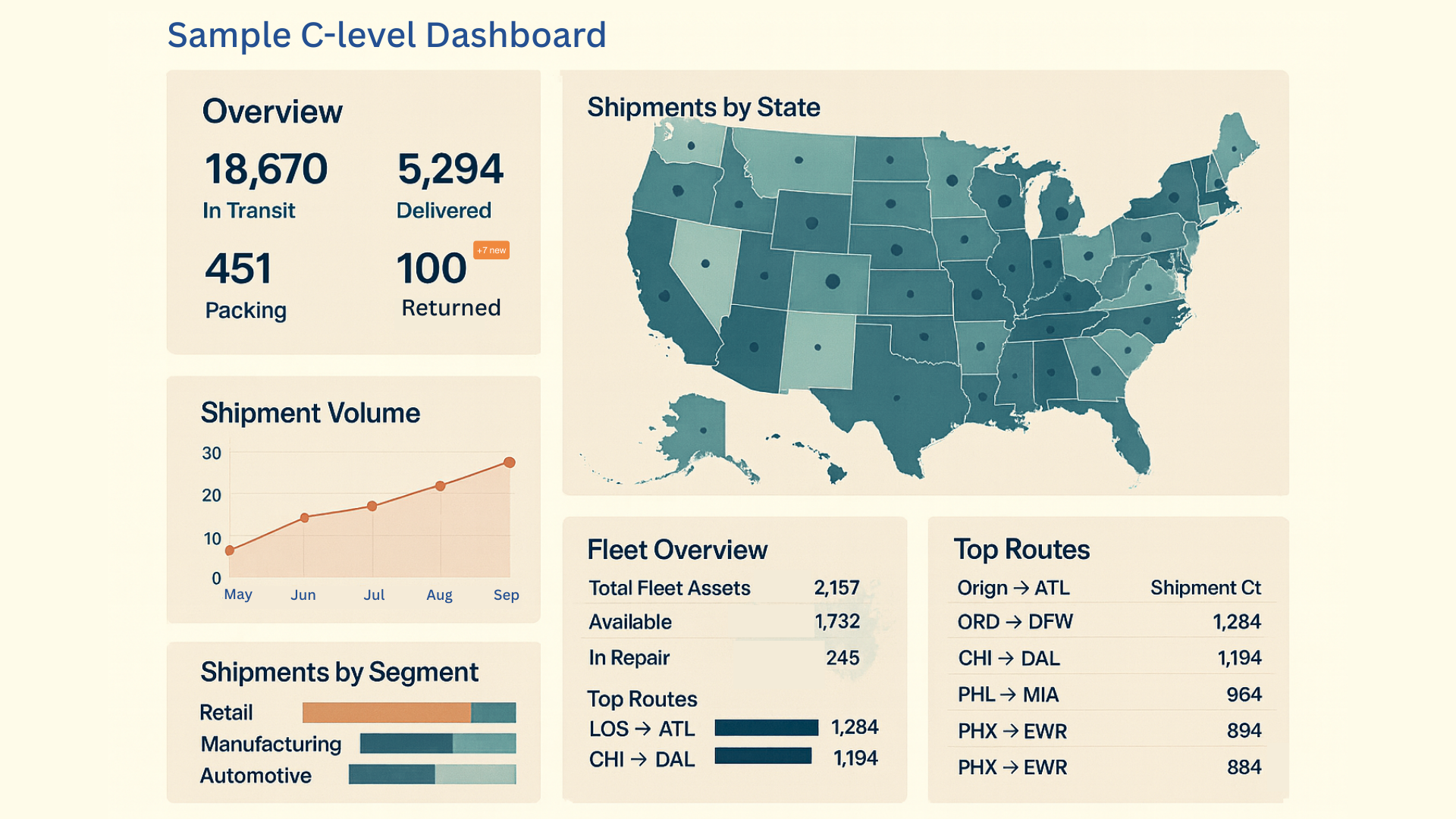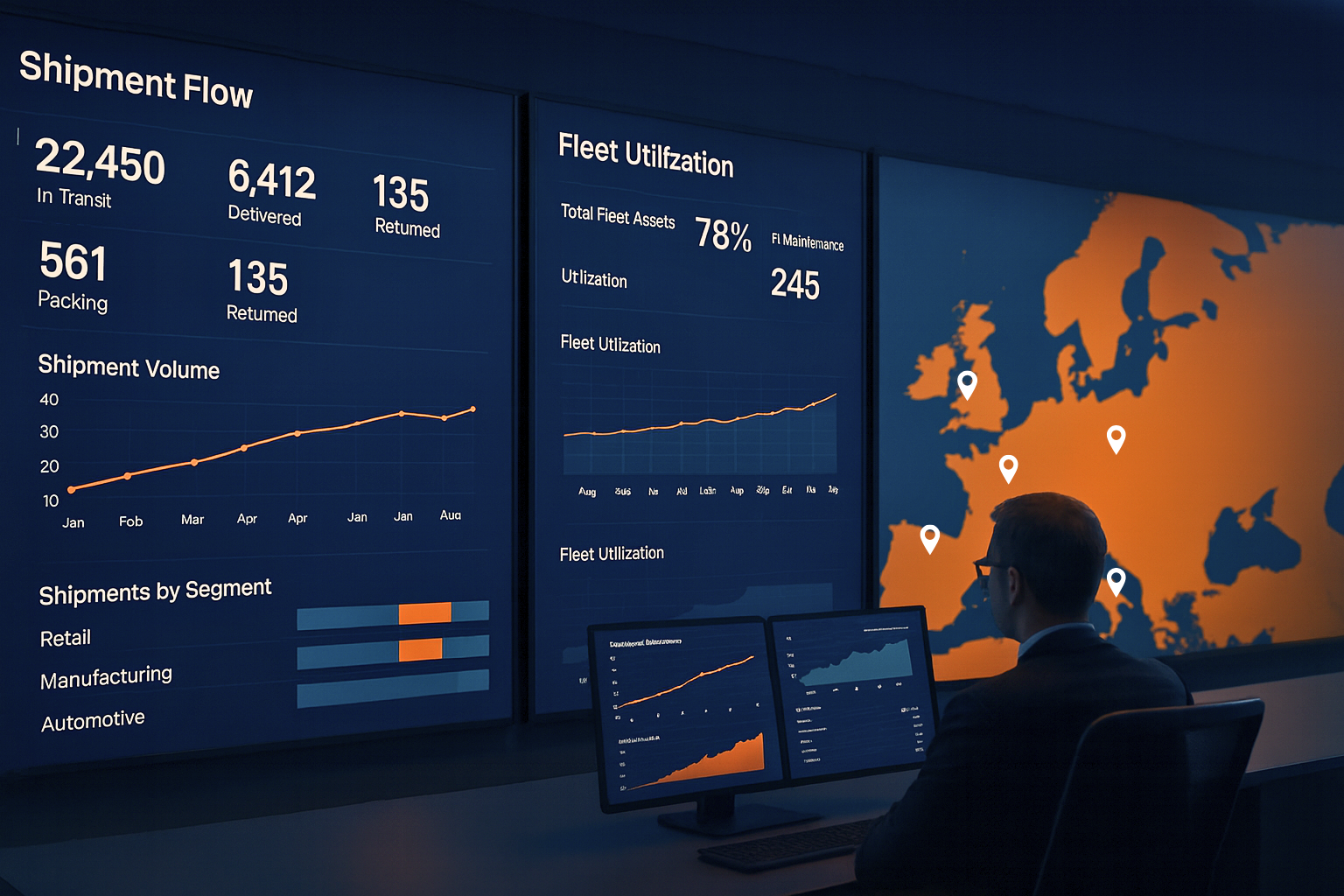
Logistics thrives on timing. When information is available exactly when needed, trucks leave on schedule, warehouse slots are used efficiently, and customers receive their orders with confidence. Data automation in logistics makes this possible by providing your team with a clear picture of what is happening now, all while doing so in a cost-effective manner.
To understand whether a data platform truly supports the business, three questions make the difference:
- How fresh is the data? From scan to screen, updates should take minutes. This means the status of a shipment or a warehouse pick is visible in time to influence today’s operations.
- How reliable is it? Pipelines should run smoothly, recover automatically, and keep information accurate. Reliable data builds trust across teams and eliminates guesswork.
- What does it cost per unit of work? Measuring cost per order or per 1,000 events ensures that efficiency is achieved not only in operations but also in IT spending.
When these three measures are in place, smart architecture choices become simple, and companies can focus on growth instead of troubleshooting.
Table of Contents
Where Operational Systems Can Deliver Even More
Each department in logistics already works with powerful systems and clear goals.
- Warehouse Management Systems (WMS) keep inventory accurate, track stock movements, and ensure orders are picked efficiently.
- Transportation Management Systems (TMS) help coordinate routes, monitor shipments, and reduce empty miles.
- Customer Service platforms record complaints, questions, and feedback, helping teams respond quickly.
- ERP and Finance systems make sure unit costs, margins, and budgets are under control.
These tools do their job well. But the real opportunity lies in how they can work together.
When data from these systems flows into one business intelligence platform, every part of the business gains a clearer perspective. Instead of looking at single KPIs in isolation, leaders see how processes connect. This creates opportunities to:
- Discover cross-department insights. For example, linking WMS picking data with TMS delivery times shows how warehouse speed influences final customer satisfaction.
- Understand the “why” behind results. If delivery costs rise, BI can reveal whether the driver was delayed at the dock, a route was inefficient, or a product was out of stock.
- Plan more effectively. Finance forecasts become more accurate when they include real-time operational signals from transport and warehouse systems.
This shift doesn’t replace existing systems — it enhances them, transforming operational data into business-wide intelligence.
Practical Benefits of Business Intelligence in Logistics
BI changes the way decisions are made. Instead of looking back at monthly reports, managers and teams see the current situation as it unfolds. This immediacy builds confidence and allows action before problems grow.
Delivery performance becomes easier to manage because OTIF results can be tracked daily, by lane and by carrier. Underperforming routes stand out quickly, giving managers time to adjust schedules or renegotiate contracts. Route planning also improves when analytics reveal how fuel consumption, idle time, and detours influence overall cost. Companies that apply BI to these areas often save millions annually through optimization and smarter scheduling.
In warehouses, real-time monitoring of dwell time and picking efficiency helps teams react during the shift. Bottlenecks can be eased before they impact the rest of the supply chain. In customer service, BI connects complaints with operational events, making it clear where improvements are needed and allowing teams to resolve issues with precision.
Dashboards stop being passive screens and become active tools for guiding daily work. They show what is happening now, what will matter in the next hour, and where resources should be directed to create the best results.

Sample C-level logistics dashboard with shipment status, fleet overview, and top routes
Starting with the Right Questions
Building BI capability begins with clarity about the questions that matter most. What information would change decisions if it were available sooner?
Some of the most impactful starting points are:
- The true time of order fulfillment, measured across each step.
- The volume of customer complaints, broken down by channel or product line.
- The rate and causes of shipment delays in specific regions.
Questions like these reveal where integrated data creates the greatest value. The answers already exist within operational systems, but they are scattered. BI brings them together in a way that makes them reliable, fast, and ready for action.
How BRSolutions Supports This
You can’t manage what you can’t see. Although logistics is fast and increasingly automated, there are still areas where decisions are made intuitively. Business Intelligence is a way to turn guesswork into knowledge and movement into precisely planned direction.
At Business Reporting Solutions, we make sure data platforms deliver real business value. We help organizations design, build, and run BI environments that are reliable, scalable, and cost-effective. Our expertise covers the full data journey: from strategy and architecture, through reporting and automation, to ongoing support and optimization.
Most importantly, we work as a partner. Whether it’s a cloud migration, a new BI platform, or fine-tuning what’s already in place, our role is to help teams get the most out of their data.



